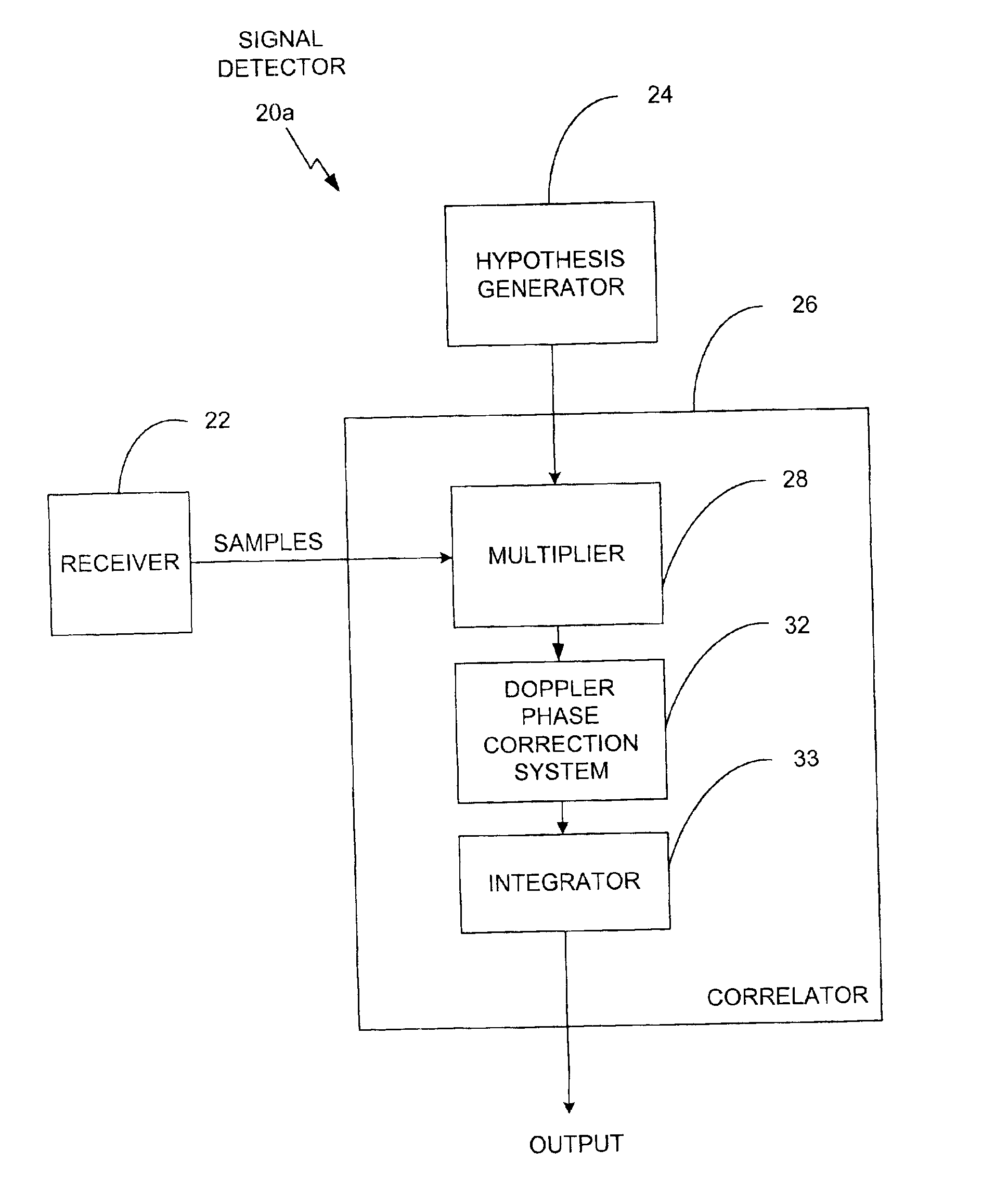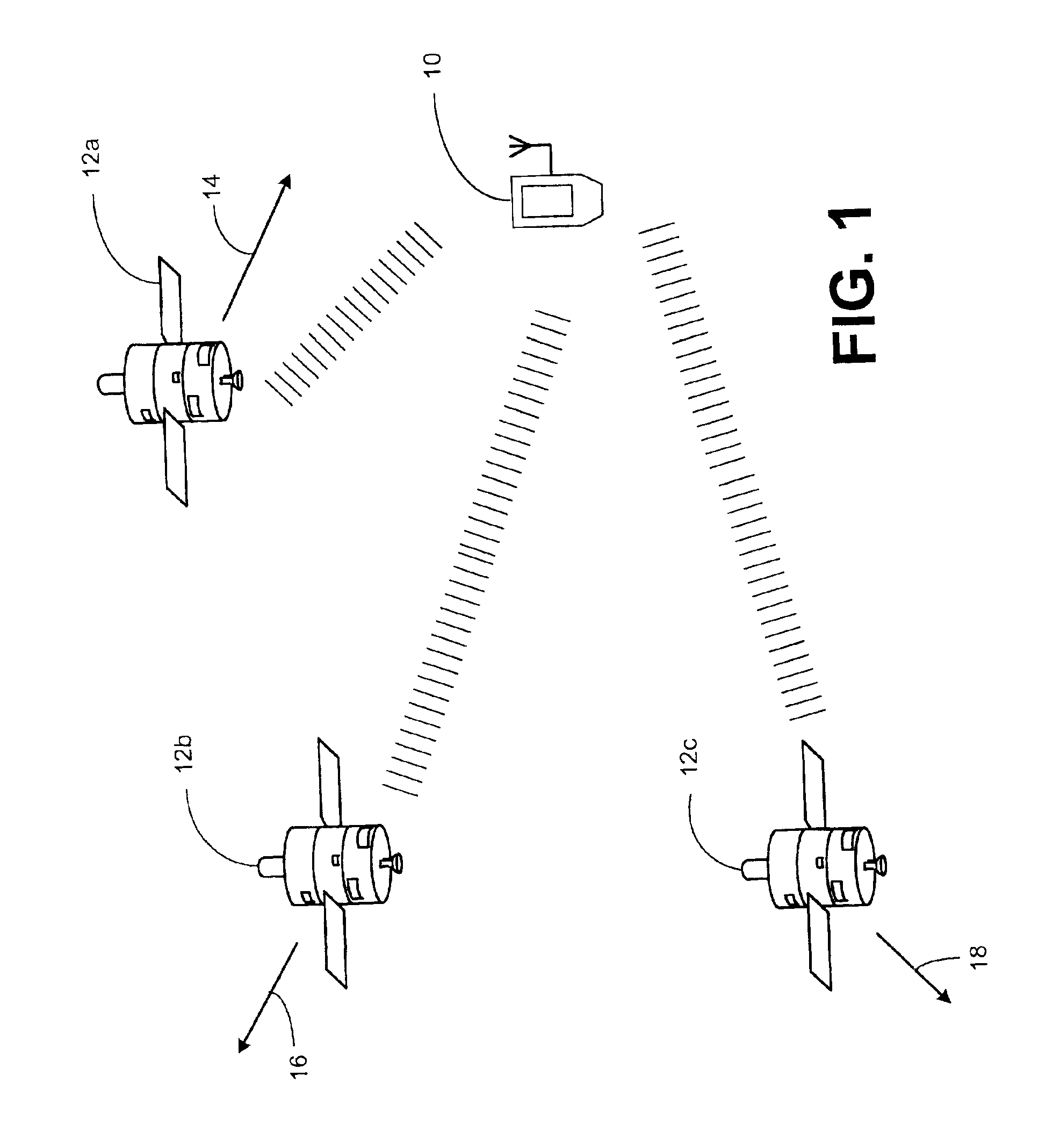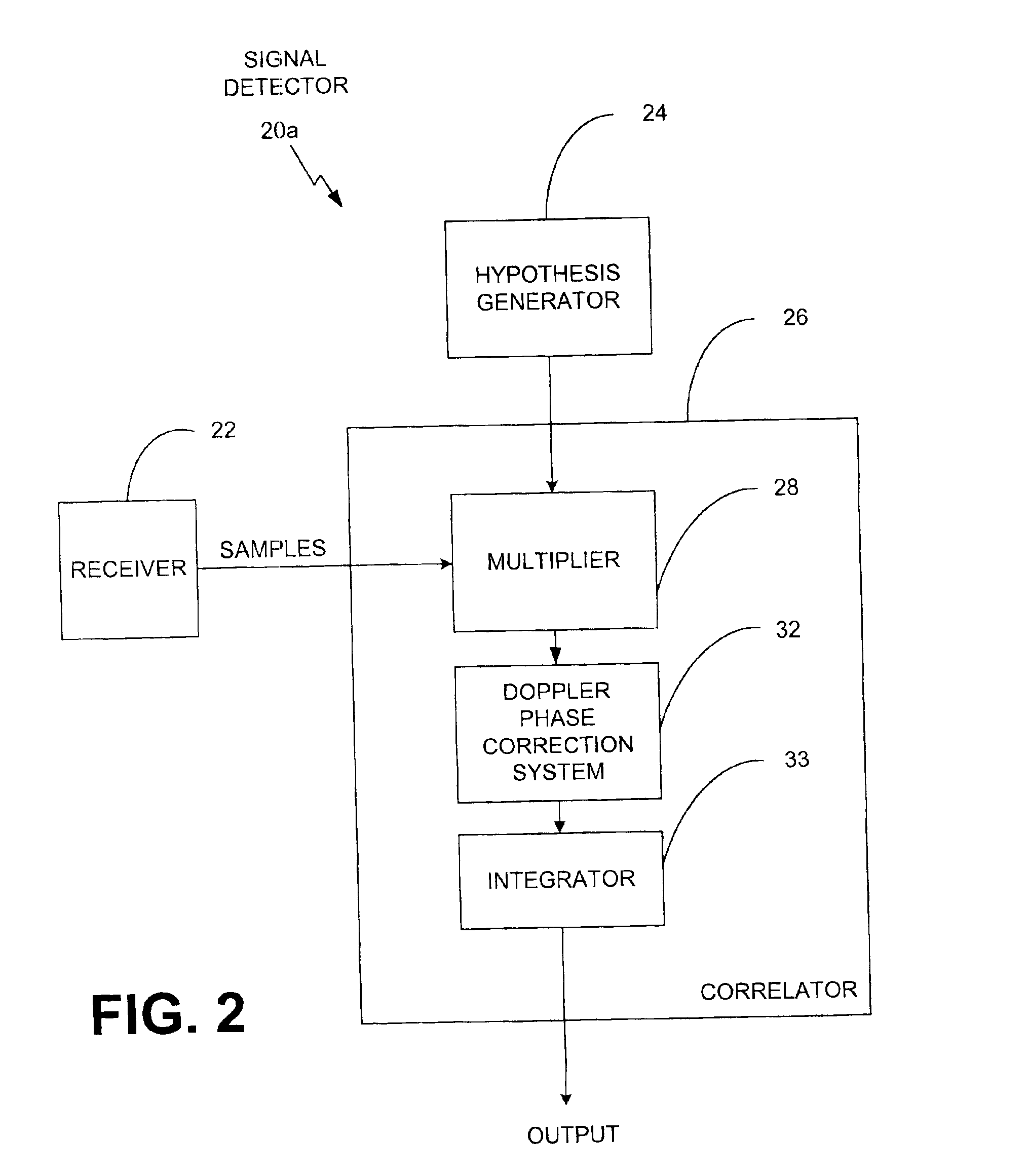Signal detector employing a Doppler phase correction system
a phase correction and signal detector technology, applied in the field of wireless spread spectrum communication and signal detection using correlation analysis, can solve the problem that the system still suffers from some doppler errors, and achieve the effect of improving correlation, reducing false positives, and accelerating the identification of false positives
- Summary
- Abstract
- Description
- Claims
- Application Information
AI Technical Summary
Benefits of technology
Problems solved by technology
Method used
Image
Examples
implementation example
[0158]3. Implementation Example
[0159]A matched filter chip code-named “Magna” which combines some of the functionality of the sampling circuitry 308, the timing circuitry 307, and the signal detector 20 (including matched filter 402; see FIG. 10) has been developed by the assignee of the subject application (Conexant Systems, Inc. of Newport Beach, Calif., U.S.A.). A processor chip which embodies the functionality of the GPS processor 303 of FIG. 4 code-named “Scorpio”, Part No. 11577-11, is commercially available from the assignee of the subject application. In one implementation, the processor has additional GPS-specific circuits, such as tracking channels for continuously tracking a number of GPS satellite signals. Typically, the processor includes at least an embedded microprocessor with an external bus. In one configuration, the processor views the matched filter chip as a memory mapped peripheral. It issues commands to the matched filter chip, and retrieves results after it ha...
PUM
 Login to View More
Login to View More Abstract
Description
Claims
Application Information
 Login to View More
Login to View More - R&D
- Intellectual Property
- Life Sciences
- Materials
- Tech Scout
- Unparalleled Data Quality
- Higher Quality Content
- 60% Fewer Hallucinations
Browse by: Latest US Patents, China's latest patents, Technical Efficacy Thesaurus, Application Domain, Technology Topic, Popular Technical Reports.
© 2025 PatSnap. All rights reserved.Legal|Privacy policy|Modern Slavery Act Transparency Statement|Sitemap|About US| Contact US: help@patsnap.com



